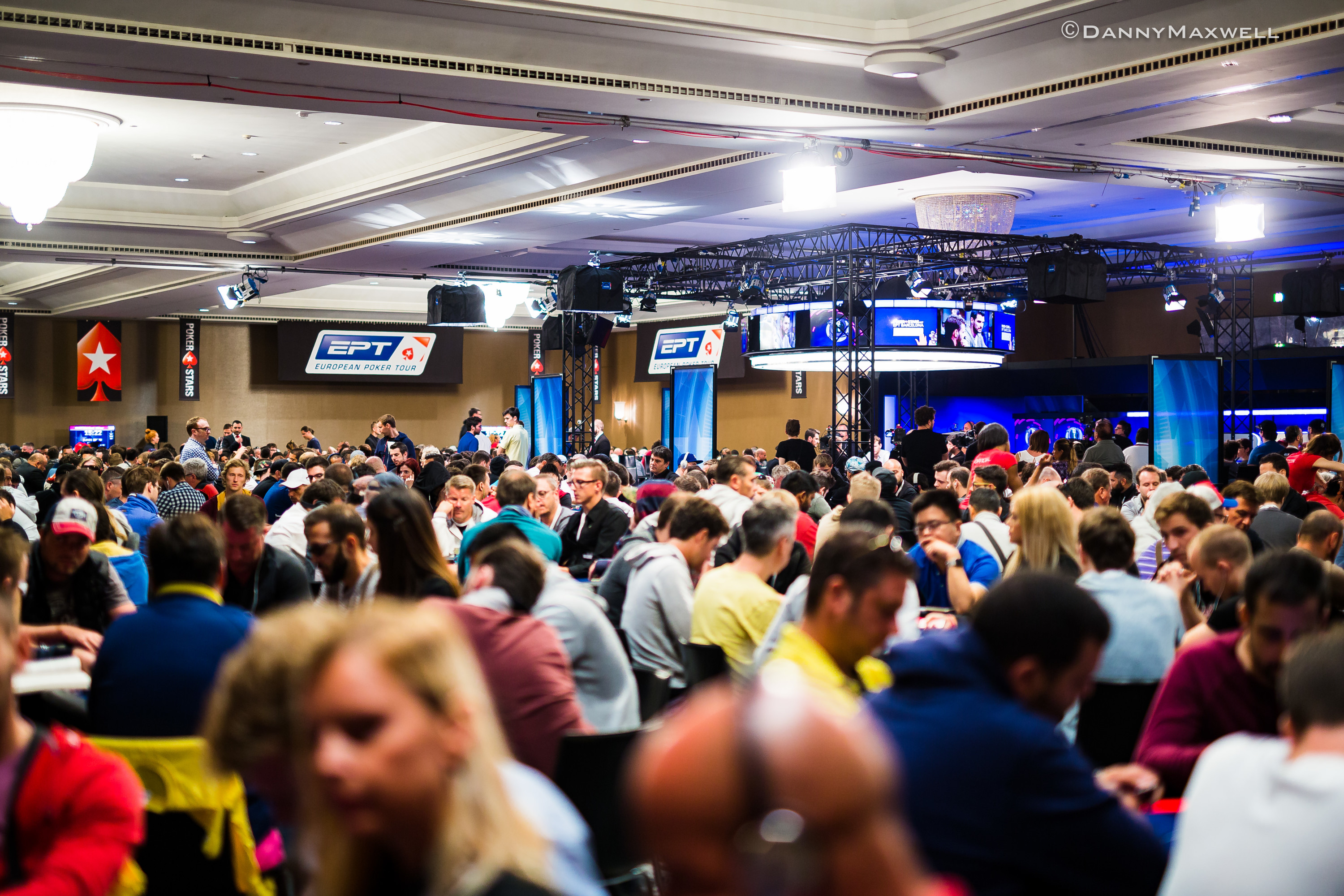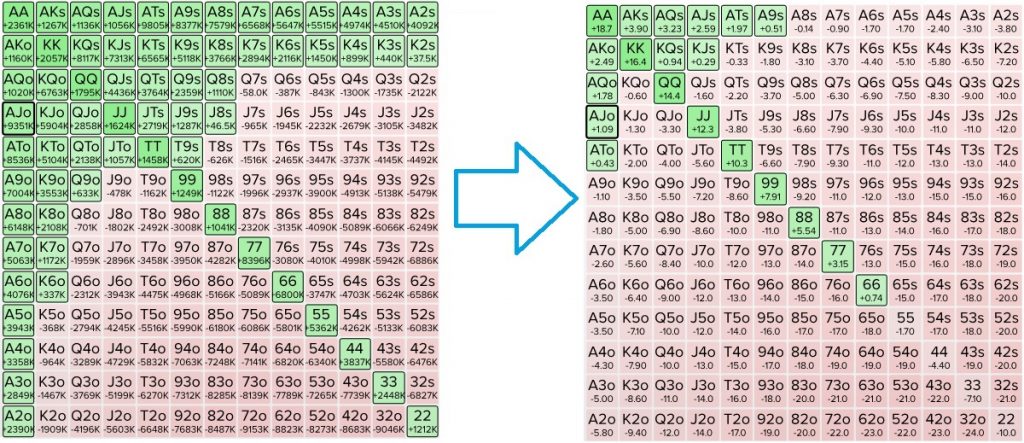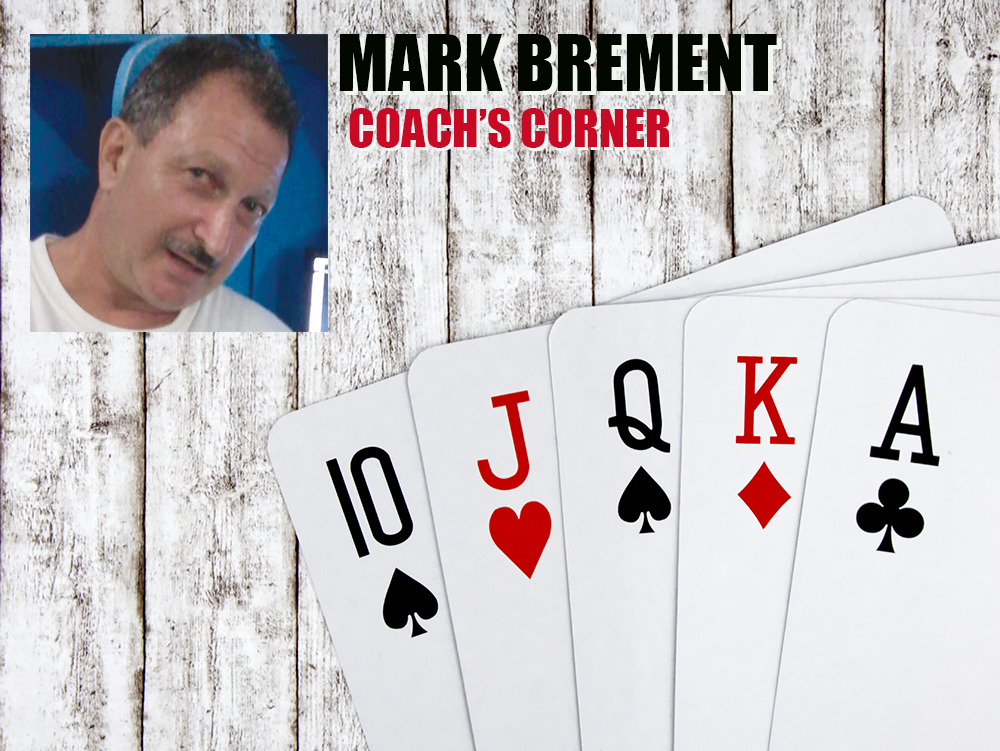Unfortunately, your strategy must change as the blinds increase both to take advantage of your opponents’ weaknesses and to combat getting blinded out of the tournament. In this article, I will discuss Sit and Go strategy for the middle rounds – the period between the start of 50/100 blinds and until 3 players are left battling for the money. Middle Stage Poker Tournament Strategy. Current poker tournament blind structures are fairly fast. So you’ll quickly approach the pivotal middle stage of a tournament. By this period, the antes have kicked in and as a result, your aggression should also kick up another level.

(This article is a follow up to 'Early Stages Tournament Strategy')
If you have played well enough to reach the middle stages of a tournament then your strategy has worked well so far. At this point you most likely have one of three possible chip stacks: a short stack, an average stack, or a big stack. Each of these stacks requires a different strategy to adapt to the increasing blinds and antes.
This article will teach you how to play each stack during the middle stages. The most important part of any tournament is the middle stages, because blinds and antes finally start placing pressure on players, and the players who succeed now will have the best chance to reach the money.

We consider the middle stages as starting when half of the original player field remains, and lasting until the tournament reaches the bubble.
Playing the Short Stack in the Middle Stages
Now that you are in the middle stages of the tournament, blinds are pretty significant in relation to the average stack, and antes have most likely kicked in. Short stacks are in for some tough times because the blinds will put the most pressure on their smaller chip stacks. We consider your stack 'short' if you have less than twenty big blinds.
With a short stack you have very limited options, and your position at the table will dictate most of your plays. If you are in early or middle position, you cannot play a hand unless you are willing to commit your entire stack to the hand. The worst play you can make as a short stack is to raise in early position with a mediocre hand, then have to fold to a re-raise: it's just giving money away.
Poker Tournament Strategy Middle Stages
In late position you have a few more options, including the steal or the re-steal. To steal the blinds, wait until you are in late position and everyone folds to you. With less than ten big blinds you need to go all-in, but with more than ten big blinds you can make a standard 3x raise and hope that the rest of the players fold. If you can pick up the blinds/antes once per round you will be in good shape.
Poker Tournament Strategy Middle Stages Pdf
To re-steal, wait until another player with a medium or large stack makes a play at the blinds (you have to be behind the player who is stealing). After he/she raises, push all of your chips in. Most raises at this point will be with marginal hands, so your re-raise should scare most players off. If you can re-steal once in a while you will be able to build your stack, because you win much more than just the blinds/antes.
NOTE - You should only re-steal when you have enough chips to make a substantial re-raise. If someone raises to 400 chips, and you only have 800 chips, you cannot re-steal because your 400 chip re-raise isn't enough money to scare anyone away. Also, never re-steal against another short stack because they are liable to call off the rest of their stack with any two cards.
By stealing and occasionally re-stealing pots, you will be able to build back up to an average stack.
Playing the Average Stack in the Middle Stages
We consider an average stack during the middle stages as any stack with 20-50 big blinds. A player with an average stack has quite a few more options than a player with a short stack. We recommend following the same approach to stealing and re-stealing (target average-large stacks, and don't get too aggressive) but you also can add a few more plays to your playbook: the squeeze play and postflop play.
To make a squeeze play, wait until you are in late position and an early position player makes a small-average sized raise. If a few other players call, go ahead and make a substantial re-raise (regardless of your cards). Since no one has shown any true aggression in the hand, you can bet that most players have mediocre hands like AJ or a small pocket pair, and will fold to your re-raise. Squeezing can win you a ton of chips, because between the blinds, antes, and the other players' calls, there is a lot of money in the pot.
Make sure to only squeeze against other average-big stacks. If a short stack calls a raise and has half of their chips in the middle, it is unlikely that they will fold to a squeeze play because they are already pot committed.
Also, with an average stack you can see a few flops and try to outplay your opponent later in the hand. If you are in late position feel free to call a raise or two with solid hands, and see what the flop brings. Don't get too aggressive, but if you call a raise and smash a flop you can slow play your way to a huge stack.
Playing the Big Stack in the Middle Stages
Big stacks have two options for playing the middle stages of the tournament:
- They can follow the advice listed above for middle stacks, which will protect their stack and let them gradually accumulate chips for the bubble.
- They can go into 'bulldozer' mode and try to build an enormous stack.
Option #2 is a little more risky, as there is a chance someone will finally stand up to you and take a lot of your chips, but it can also allow you to completely dominate a table for extended periods of time.
To go into 'bulldozer' mode, make sure to raise almost any hand in late position, re-steal as much as you possibly can, and generally put as much pressure on the rest of the table as you can. If no one else has a big chip stack at your table, there is little risk of actually going bust, and the potential reward is that you become one of the tournament's chip leaders going into the bubble.
Now that you know how to play the late stages, learn how to play the bubble.
More General Poker Tournament Strategy:

You’ve made it through the first hour or two and you will find yourself moving out of the early stages of the tournament and into the middle stage.
You will have to judge when that transition happens as it will be different in every tournament depending on the number of entrants and the blind structure. In general you will be able to tell as the blinds are starting to get quite high compared to the short stacks and those that have not managed to increase their chip stack and keep it in line with the average stack will start to be in a critical position.
So the question is, how should you continue to play, should you change the way you have played in the early stage?
Well the answer is maybe, maybe not! The problem with trying to define play in poker is that there are so many variables and so many different situations that in a guide like this it’s only possible to generalise on the type of play to make and the possible outcomes. There is no substitute for experience.
Middle Stage Tournament Strategy
The first thing to do is to assess your position in the tournament. What stack do you hold? How does this compare to the average stack? How much time have I got?
A key figure to understand is how many orbits your stack holds, which tells you how many orbits around the table (time it takes the dealer button to move back to the same player) you could just sit there and not play a hand before you ran out of chips. This combined with the average stack will give you a good indication of your situation in the tournament and whether you need to shift gears in the way you play and your middle stage strategy.
The whole philosophy that underpins our middle stage strategy is that we want to be patient, just like we were in the early stage, but we do not want to just sit there and let our chip stack reduce to the point where we have no fold equity left.
Fold equity like we talked about early is when you are the aggressor in the hand and by making a bet or raise it gives you a second way to win the hand not just by holding the best hand at a showdown, but also with the chance that your opponent may fold from the bet or raise. If you let your chip stack get too low then this fold equity reduces or disappears completely as your bet or raise would now be so small compared to your opponents stacks that there is more chance that someone will call.
So we want to monitor and recognise when we are approaching being a short stack and then change gears in the middle stage. We would take more risk in order to try and avoid getting to the short stack, mission critical stage where we have very minimal fold equity.
In this section we will look at calculating and monitoring key indicators of your situation in the tournament and then how to change gears if it is required. We will also introduce some more strategy topics such as the Gap concept which comes much more into play in the middle to late stages of a tournament.
Select the first article from the section contents below to get started.
Section Contents: Accelerating through the Middle Stages of a Poker Tournament
Trust & Security
I'll only recommend Safe & Trusted sites with a proven track record
By Game Type
Different rooms are better for different game types & stakes
Beginner Friendly
I'll find you a site with players of a similar skill level
Promotions
I'll find you the best value Promotions, Bonus & Freebies!